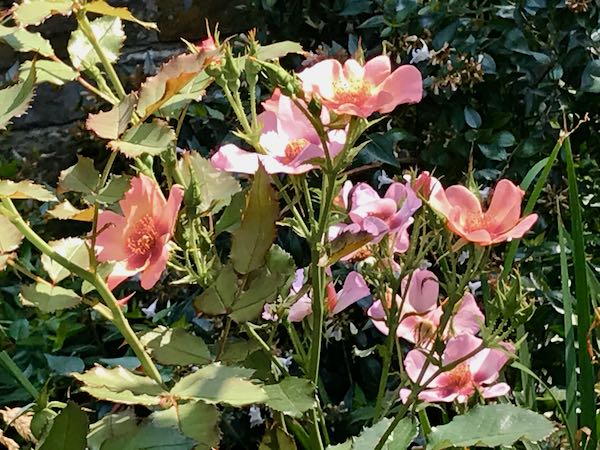Rosa pendulina, commonly known as Alpine Rose or Mountain Rose, is a captivating member of the Rosaceae family of plants. It is native to central and southern Europe, primarily found in mountainous regions where it thrives in warmer and wetter locations. This climbing or rambling shrub exhibits remarkable beauty and resilience in its natural habitats.
Also referred to by various names such as Rosier des Alpes, Rosier sans épines, Single Alpine Rose, Virgin Rose, Spineless Rose, Pendent-fruited Alpine Rose, Alpine Hedge Rose, Alpina Pendulina, Alpenrose, or Rosa alpina, Rosa pendulina showcases a stunning floral display that begins earlier than many other rose varieties. The flowers, characterized by their enchanting fragrance, are a dark pink hue, becoming lighter toward the center. They consist of five delicate petals and vibrant yellow stamens, which attract pollinators such as bees and butterflies.
Rosa pendulina is a once-flowering rose that blooms in the spring, enchanting onlookers with its abundant and alluring blossoms. Growing to a height of approximately 3 meters (10 feet), this rose variety exhibits an almost thornless nature, making it a desirable option for those who wish to avoid prickling encounters. The stems of Rosa pendulina feature a reddish-purple tint, adding a touch of visual interest to the plant. The oblong-ovate leaves, in a lush shade of green, create a lovely backdrop for the exquisite flowers. They are smooth and glabrous, enhancing the overall aesthetic appeal of the plant.
Distinct features:
One of the distinctive features of Rosa pendulina is its fruit, known as rosehip, which is oblong in shape and hangs downward. These rosehips are not only visually appealing but also hold significance for their nutritional and medicinal properties. Rosehips have been utilized for centuries in various preparations, including herbal teas, jams, and dietary supplements.
Rosa pendulina has been cultivated widely since the 1600s, and its timeless charm continues to captivate gardeners and rose enthusiasts to this day. Its adaptability to different growing conditions and its ability to withstand colder climates make it a popular choice for both experienced gardeners and beginners.
How to grow Rosa pendulina:
When cultivating Rosa pendulina, it is recommended to provide it with a sunny or partially shaded location. The plant thrives in rich, fertile soil that is moist but well-drained, and it can tolerate various soil types. A noteworthy aspect of Rosa pendulina is its exceptional frost hardiness, with the ability to withstand temperatures as low as -30ºC (-22ºF). This makes it a reliable option for regions with colder climates.
Beyond its aesthetic appeal, Rosa pendulina plays a valuable role in supporting pollinators, particularly bees and butterflies. By attracting these important creatures to your garden, you contribute to the overall health and biodiversity of the ecosystem.
In summary, Rosa pendulina, with its delightful pink blossoms, near absence of thorns, and robust nature, is a magnificent addition to any garden or landscape. Its adaptability, rich history, and ability to thrive in various conditions make it a beloved choice among rose enthusiasts and a cherished symbol of natural beauty.

Other synonyms for Rosa pendulina include:
Rosa adenophora
Rosa adjecta
Rosa affinis
Rosa alpina
Rosa alpiniformis
Rosa andrewsii
Rosa balcanica
Rosa cinnamomea
Rosa coccialba
Rosa diplacantha
Rosa glandulosa
Rosa hispida
Rosa hybrida
Rosa inermis
Rosa intercalaris
Rosa lagenaria
Rosa majalis var. globosa
Rosa malyi
Rosa odoratissima Scop.
Rosa pendula Salisb.
Rosa pendulina f. eriocephala
Rosa pyrenaica Gouan
Rosa rupestris Crantz
Rosa semisimplex
Rosa stenodonta
Rosa tenuiflora
Rosa turbinata
Rosa villarsii Tratt. ex Link



